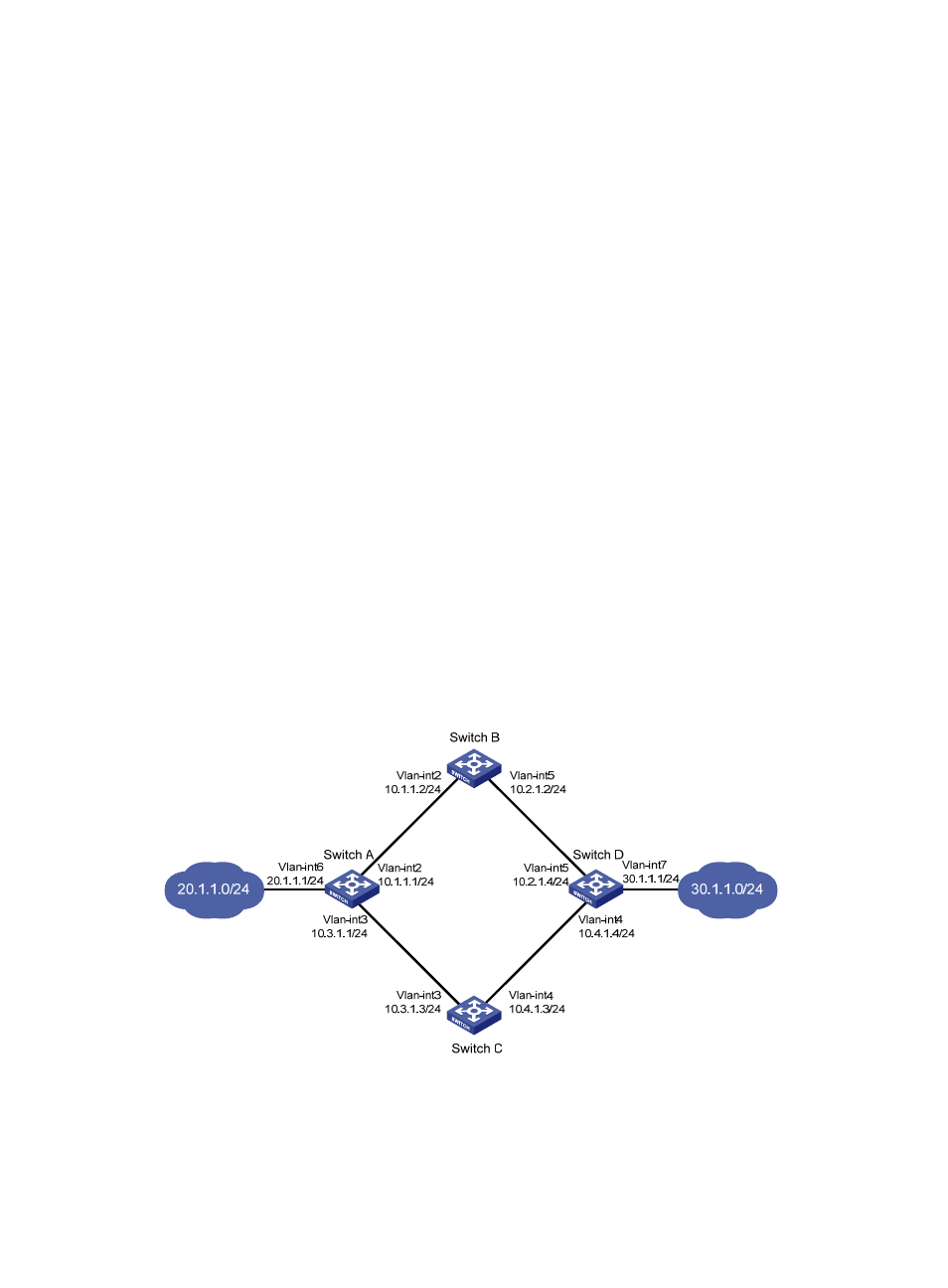Network requirements, Configuration procedure – H3C Technologies H3C S12500-X Series Switches User Manual
Page 96

88
Static routing-Track-NQA collaboration configuration example
Network requirements
As shown in
, Switch A, Switch B, Switch C, and Switch D are connected to two segments
20.1.1.0/24 and 30.1.1.0/24. Configure static routes on these switches so that the two segments can
communicate with each other. Configure route backup to improve network reliability.
Switch A is the default gateway of the hosts in segment 20.1.1.0/24. Two static routes to 30.1.1.0/24 exist
on Switch A, with the next hop being Switch B and Switch C, respectively. These two static routes back
up each other as follows:
•
The static route with Switch B as the next hop has a higher priority, and is the master route. If this
route is available, Switch A forwards packets to 30.1.1.0/24 through Switch B.
•
The static route with Switch C as the next hop acts as the backup route.
•
Configure static routing-Track-NQA collaboration to determine whether the master route is
available in real time. If the master route is unavailable, the backup route takes effect, and Switch
A forwards packets to 30.1.1.0/24 through Switch C.
Similarly, Switch D is the default gateway of the hosts in segment 30.1.1.0/24. Two static routes to
20.1.1.0/24 exist on Switch D, with the next hop being Switch B and Switch C, respectively. These two
static routes back up each other as follows:
•
The static route with Switch B as the next hop has a higher priority, and is the master route. If this
route is available, Switch D forwards packets to 20.1.1.0/24 through Switch B.
•
The static route with Switch C as the next hop acts as the backup route.
•
Configure static routing-Track-NQA collaboration to determine whether the master route is
available in real time. If the master route is unavailable, the backup route takes effect, and Switch
D forwards packets to 20.1.1.0/24 through Switch C.
Figure 24 Network diagram
Configuration procedure
1.
Create VLANs and assign corresponding ports to them. Configure the IP address of each VLAN
interface as shown in